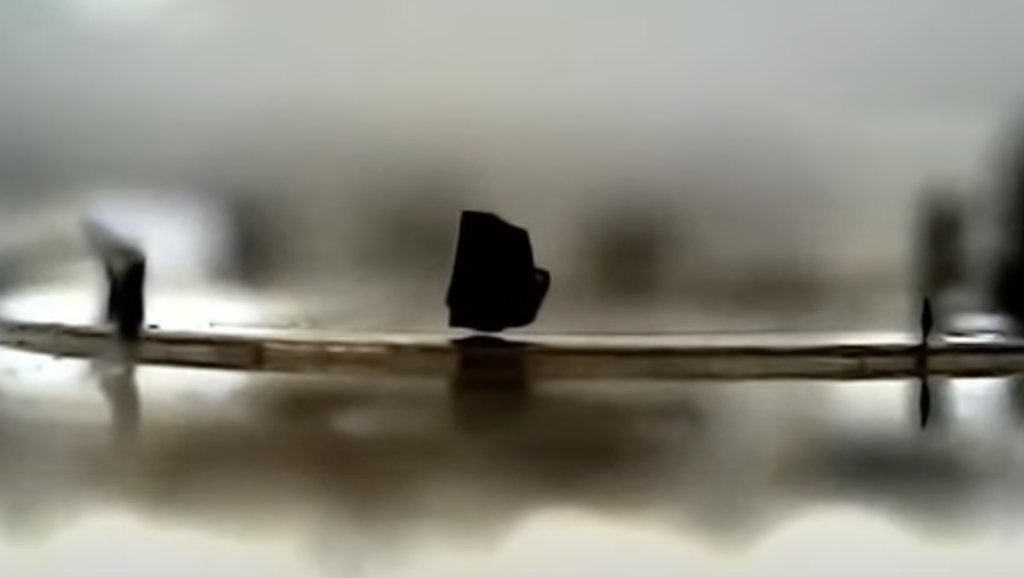This is a review of the arguments and evidence for and against LK99 type materials as room temperature superconductors.
Case Against Cuprous Sulfide and Iron Contamination
The claims against LK99 and LK99-variants materials as a superconductor is that cuprous sulfide has some transition temperatures that match up with some of the bulk LK99 readings. They claim that the partial levitation is from metal contamination for paramagnetic partial levitation.
The against case also boils down to the Korean and Chinese researchers working on this are incompetent, have bad equipment, bad measurement and are sloppy fools.
There are disputes about the levitation and what we are seeing levitate.
Case for LK99 Variants as Room Temperature Superconductors Has Full Levitation, Microwave Absorption, Thin Film Superconducting Resistance and Meissner Effect indications
The case for LK99 Variants as Room Temperature Superconductors Has Full Levitation, Microwave Absorption, Thin Film Superconducting Resistance and Meissner Effect indications. There are now two teams experimentally replicating in Korea and multiple teams in China. There is supercomputing modeling that indicates that LK99-type materials are promising and could work.
Iron and Paramagentic Materials Cannot Stably Fully Levitate
Earnshaw’s theorem proves that using only paramagnetic materials (such as ferromagnetic iron) it is impossible for a static system to stably levitate against gravity. Static stability means that any small displacement away from a stable equilibrium causes a net force to push it back to the equilibrium point.
Earnshaw’s theorem proved conclusively that it is not possible to levitate stably using only static, macroscopic, paramagnetic fields.
The recent videos of full levitation with PCPOSOS (LK99 sulfur variant) seems to counter claims of partial paramagnetic levitation.


Lawrence Berkeley National Lab researchers have employed computational methods to outline an approach for optimizing the LK99 material as a superconductor. The modeling work runs counter to the contamination claims.
Here are nextbigfuture LK99 and PCPOSOS articles with those topic tags.
The patent information about the thin film is key. This is the main form of the material that has superconducting levels of resistance. The patent indicates that it was created with chemically vapor deposition.
US Air force research is funding thin film LK99 research.
b>Patent on the LK99 Thin Film Superconductivity
The matching international LK99 patent is here. WO2023027536 and WO2023027537
In the patent, they show and state there is superconducting levels of low resistance. The resistivity of LK-99 was 1/10,000 to 1/100,000 of copper.
For Example 4, the grains of the solid phase reaction were processed into a square shape and the resistance change according to the temperature change (304K ~ 382K) was measured using equipment (Power (voltage/current) Source KEITHLEY 228A, Sensitive Digital Voltmeter KEITHLEY 182, Probe Method: Measured using the 4-probe method) and the results are shown in FIG. 29. Referring to this, it can be seen that the ceramic compound according to the present invention exhibits superconductive properties.
In addition, FIG. 42 is a photograph of an experiment in which resistance was measured in real time for Example 4, and the measured resistance was approximately 10^-12 Ohms per centimeter. Very low resistance in Ohmcm.

Microwave Absorption
Chinese universities and research labs have published experimental evidence in support of LK99 as a room temperature superconductor. The amount of superconducting material that is made in pile of LK99 powder is small. The LK99 needs to have precisely located copper and phosphorous. This leaves one dimensional molecular chains of superconducting material.
All previous superconductors have been found to absorb microwaves. It is the nature of superconducting material that they exclude magnetic fields and thus the electronic and magnetic behavior is observed based on interaction with microwaves.
Meissner Effect Experimental Evidence
China researchers are also detecting weak readings that are consistent with a meissner effect. Meissner effect is one of the main properties of superconductors.
Supercomputer Modeling Support
The Berkeley National Lab supercomputer simulations and other supercomputer modelers support the LK99 variants.
The critics who claim sulfur contamination do not explain the thin film results and they just dismiss the modeling and they have not shown sulfur contamination that achieves partial or full levitation.

Brian Wang is a Futurist Thought Leader and a popular Science blogger with 1 million readers per month. His blog Nextbigfuture.com is ranked #1 Science News Blog. It covers many disruptive technology and trends including Space, Robotics, Artificial Intelligence, Medicine, Anti-aging Biotechnology, and Nanotechnology.
Known for identifying cutting edge technologies, he is currently a Co-Founder of a startup and fundraiser for high potential early-stage companies. He is the Head of Research for Allocations for deep technology investments and an Angel Investor at Space Angels.
A frequent speaker at corporations, he has been a TEDx speaker, a Singularity University speaker and guest at numerous interviews for radio and podcasts. He is open to public speaking and advising engagements.


I think the best case against is that room temperature superconductivity, is an extraordinary claim. Many scientists want to see extraordinary proof for extraordinary claims. Those scientists tend to believe the evidence so far is enough to proceed with the research, but not enough to accept the claims.